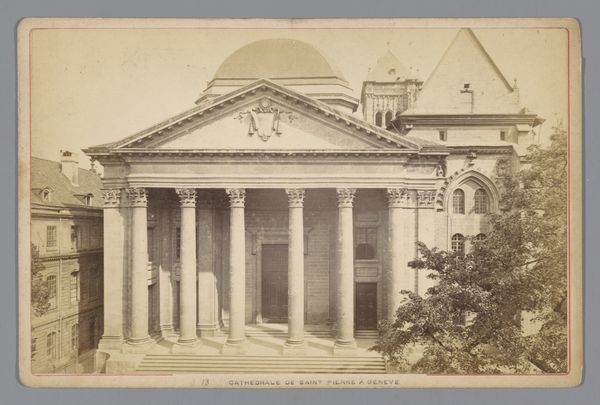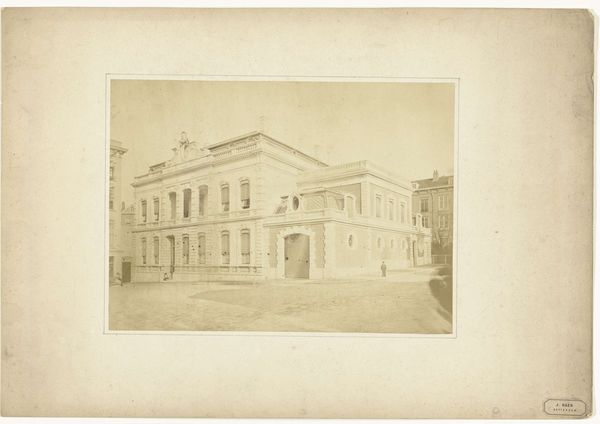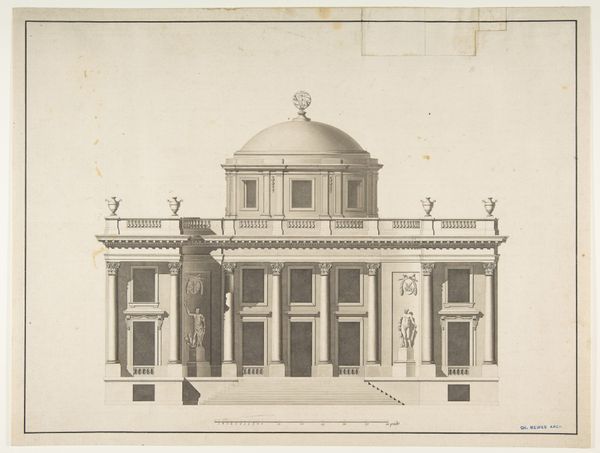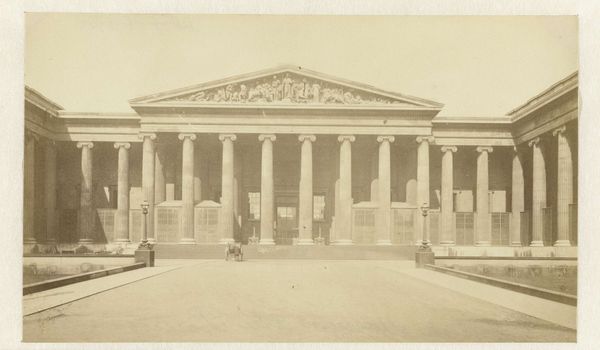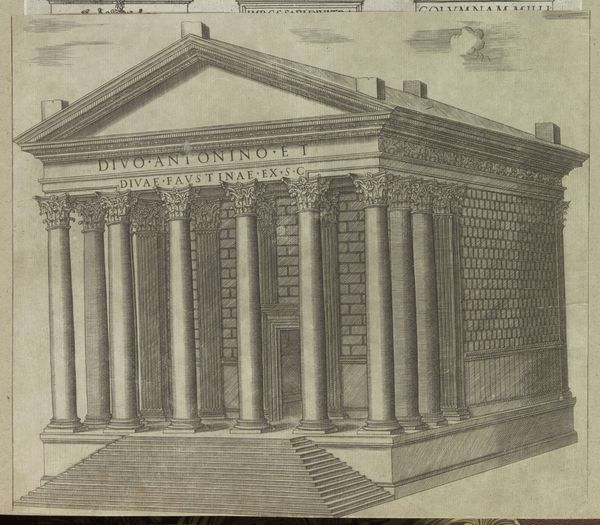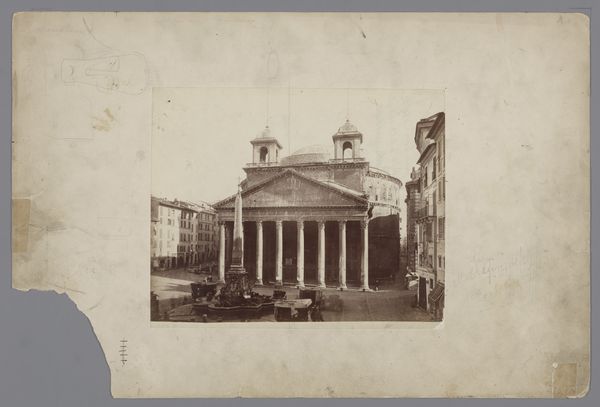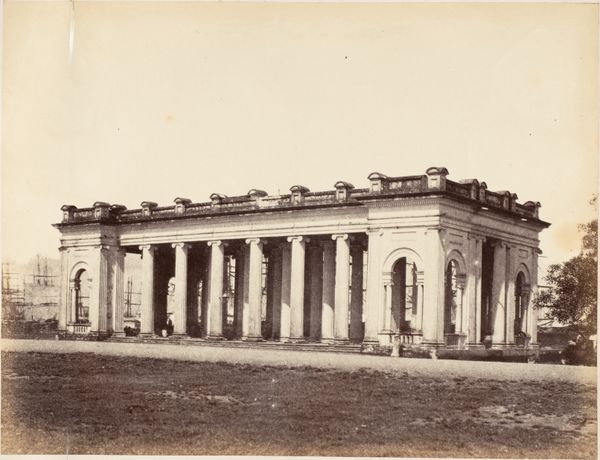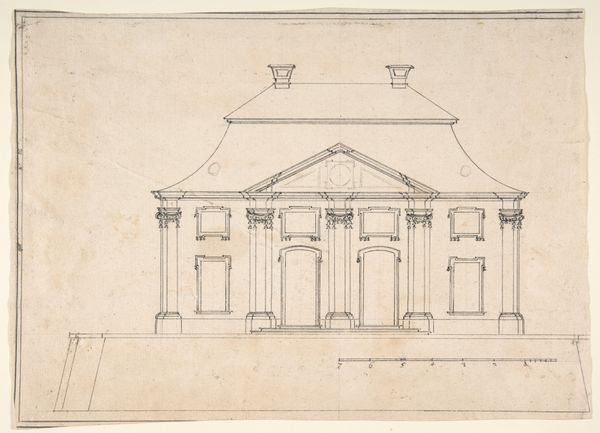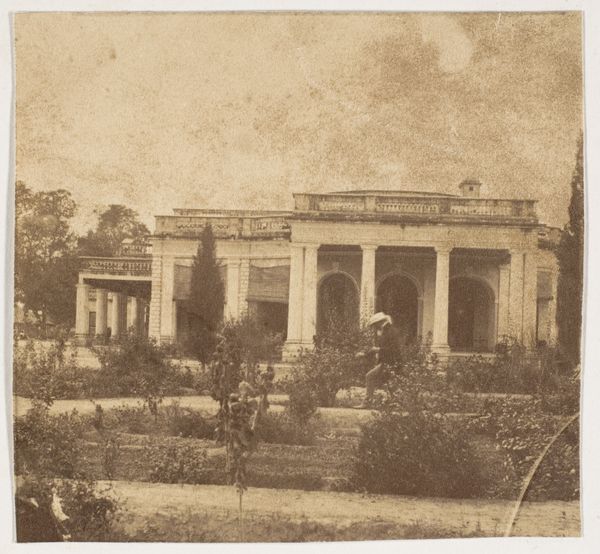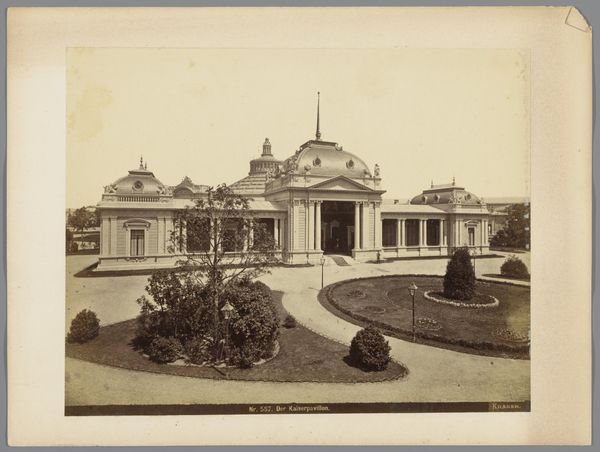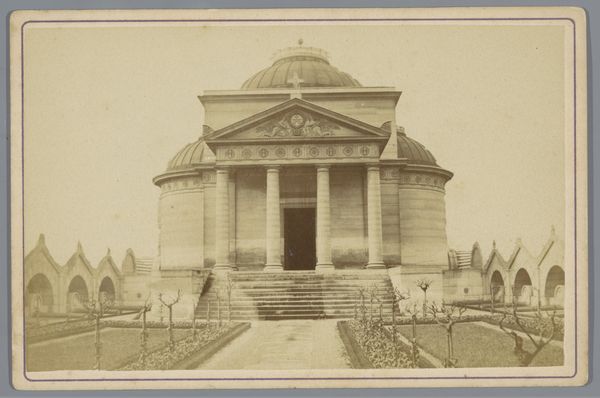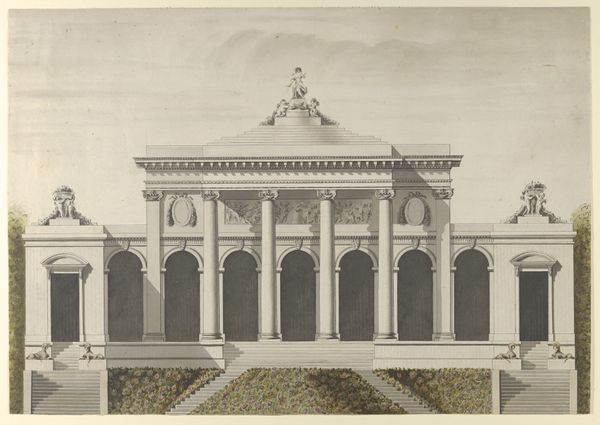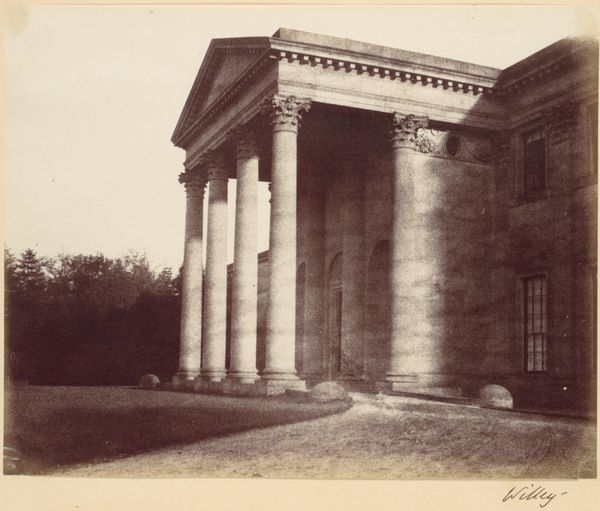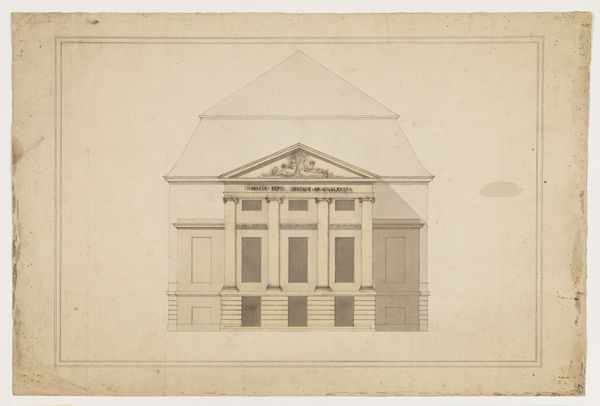
Dimensions: height 108 mm, width 160 mm
Copyright: Rijks Museum: Open Domain
Curator: What strikes me immediately is the image’s formality. There’s such rigidity in the vertical lines of the columns against that pale sepia tone. Almost like a stage set, monumental and imposing. Editor: Indeed. Here we have an image titled “Exterieur van de Kathedraal van Genève,” taken before 1880 by Auguste Garcin. It's an example of early architectural photography employing the daguerreotype technique. It exemplifies neoclassicism in its structural representation of civic space. Curator: You mentioned ‘civic space,’ and it made me think: Who was this space for, back then? The framing is interesting because the cathedral isn't seen as a fully separate entity. It is very consciously integrated in its immediate urban surroundings through Garcin's thoughtful composition. The church in conversation with city life. Editor: Exactly, the location of such photography says volumes about the photographer’s, or their patron’s, desires to legitimize institutions through representation. Note, too, the crisp details afforded by the daguerreotype process. The neoclassicism is underscored by this clarity, by these deliberate angles. It evokes stability. Curator: Do you feel the composition makes it appear welcoming? To my eye, it feels… guarded, almost. There are no figures visible, the symmetry creates a rather static energy. And it contributes, to my mind, a somber overall mood, doesn't it? Editor: The absence of human subjects is indeed conspicuous and indicative of early photographic methods where long exposure times precluded capturing moving figures, impacting our reception of the piece. Garcin has offered, instead, a symbolic portrait, an austere projection of Geneva's institutional persona onto its physical architecture. Curator: Well said. This exploration makes the picture all the more interesting for a modern audience, doesn't it? Seeing those layers. Editor: Absolutely, and appreciating the way form and purpose came together. A fascinating glimpse into a city's self-perception and visual history!
Comments
No comments
Be the first to comment and join the conversation on the ultimate creative platform.
